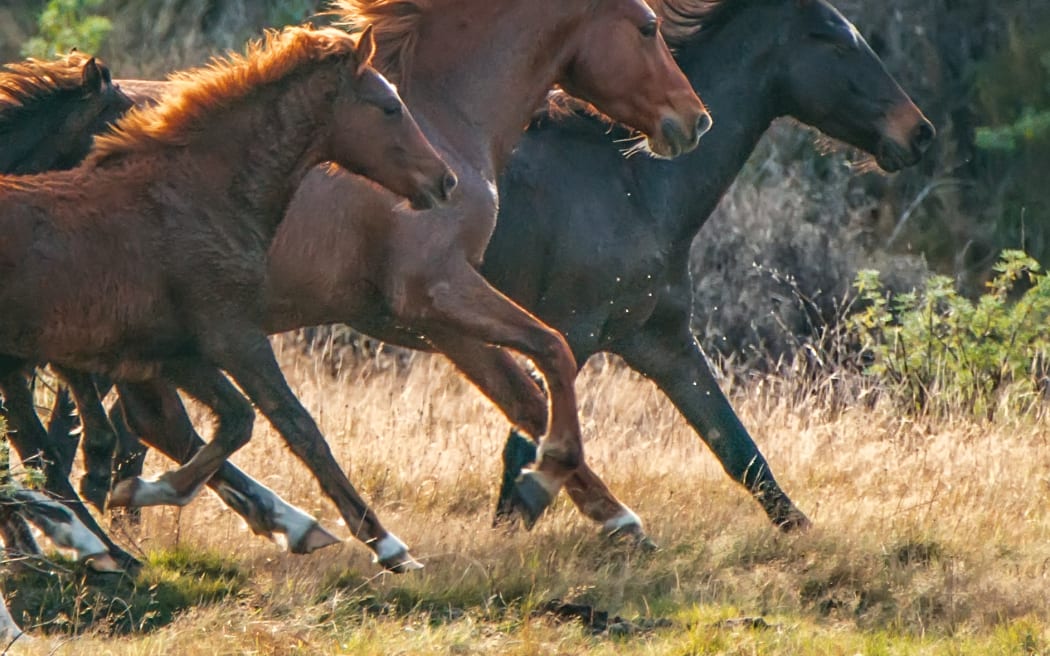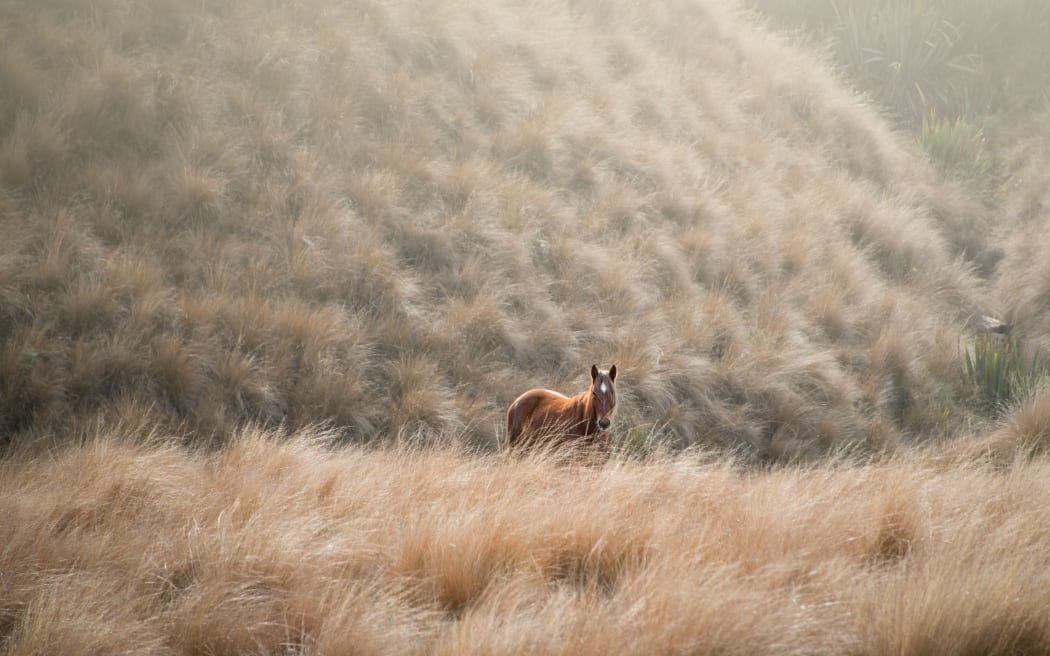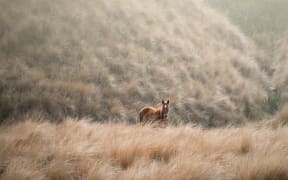Contraceptive injections are being given to Kaimanawa wild horses to curb herd growth and take pressure off the rehoming programme.

File photo: Kaimanawa horses being mustered in 2016. Photo: Supplied / Kimber Brown
Musters have been held every one or two years to keep numbers in check with hundreds of horses being found suitable owners - but that created an enormous workload for the volunteers and the Department of Conservation.
But the Animal Ethics Committee recently approved the use of an injectable contraceptive and already about 60 mares have been given it.
Kaimanawa Heritage Horses Welfare Trust chairperson Sue Rivers told Checkpoint reducing breeding rates was a better long term solution than re-homing.
"Our biggest aim was the reduction of the breeding rate, so, by reducing the breeding rate we then are able to reduce the frequency and the necessity for re-homing musters," Rivers said.
On average between 70-150 Kaimanawa horses had to be re-homed each year and it was only getting harder to do, she said.
"The last couple of years have been incredibly difficult, we only homed 88 horses this year, we were hoping for 150 but with the things that are going for everybody we did better than we had expected."
The contraception programme has started with 60 mares, a figure which will be reviewed in coming years as further evidence details the results and efficiency of the drug.
Rivers said the horses were branded so they could be rounded up and vaccinated again before the first dose had worn off.
"They're rounded up, the mares are drafted off, sedated and vaccinated.
"That vaccination has an approximate four year life span so the plan is, the mares were branded as they were vaccinated, so four years from now they'll be revaccinated to hopefully catch the majority of their breeding lives."
Rivers said the plan was unlikely to have an impact on the need to re-home horses for at least four or five years.

File photo: A wild horse roaming in the tussock in the Kaimanawa mountain ranges. Photo: 123rf.com
The re-homing programme was expected to operate at similar numbers for at least the next two years.
Once the contraception programme had an effect, the majority of horses re-homed in annual musters would be the youngest of the herd, which Rivers hoped would relieve stress on older stallions and mares.
In the early 1990s, the first contraception programme for Kaimanawa horses using Porcine Zona Pellucida (PZP) was relatively unsuccessful, Rivers said.
"That wasn't terribly successful so we haven't wanted to rush into this.
"Over the last 20 years, we have done extensive research and followed a lot of the progress... the drug of choice we chose has had really good success in a lot of different animals but particularly wild horses," she said.
The Trust's projections predicted that in eight to ten years it would only have to do a muster every two years with a reduced re-homing rate of around 40 horses per muster.
Rivers said horses put up for re-homing would likely become highly sought after in coming years as their scarcity increases.
The Kaimanawa horse muster currently takes place every year around April and May.




